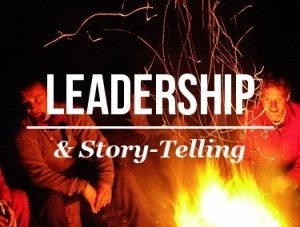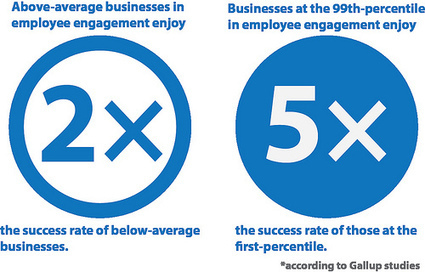 Your new post is loading...
 Your new post is loading...
TweetWhen CEO’s make an ass ofthemselves and the company they represent, does that set the tone for a potential crisis? Denny’s, Wal-Mart and Papa Johns have expressed their displeasure... with President Obama’s Affordable Health Care Act. Some companies are threatening lay-offs, other’s are rattling the saber and reducing employee hours — all to avoid providing health insurance under the new act.... Here’s the problem. When CEO’s make stupid statement like this, it sets the stage for a massive crisis for the company. Imagine if, after workers discovered their CEO said such a thing, they organized and walked out. Imagine if long-time patrons of the carry-out pizza giant got pissy too? What if they organized to stage a nationwide boycott? What if these two events happened in conjunction? Could Schnatter’s business survive? CEO’s are people, and they sometimes say dumb-ass shit. Schnatter did. How would you approach him to mitigate the fallout? [Leadership or lost leaders? ~ Jeff]
Show me a great leader and I'll show you a talented storyteller. Leadership and storytelling go hand-in-hand. In fact, leaders who lack the ability to leverage the power and influence of storytelling are missing the very essence of what accounts for compelling leadership to begin with – the story. Give me a few minutes and allow me to share a story with you – it may just change your life.... [Here's a compelling look at leaders who are storytellers ~ Jeff]
Via José Carlos
Welcome to the IPR’s Organizational Communication Research Center (OCRC), your comprehensive source for game-changing employee communication research, best practices and measures. If you want to learn more about engaging employees, building trust and improving communication climate, this is the place.... [Excellent resources for internal & employee communications ~ Jeff]
CEO David Siegel violates every rule of employee communication, tact and engagement in a companywide email signed "your boss."... This week, however, Siegel's name is in the news for an excess of a different sort. On Monday he sent his employees an email that is so crass and so over the top that even the gossip news website Gawker felt compelled to check out if it was real. Sadly, it is. Siegel confirmed it. "If any new taxes are levied on me, or my company, as our current President plans, I will have no choice but to reduce the size of this company," he wrote to employees. "Rather than grow this company I will be forced to cut back. This means fewer jobs, less benefits and certainly less opportunity for everyone." The hardcore Republican Siegel simultaneously defends his wealth and whines about what it took for him to amass it. He rails against the government, news media and taxes, as well as the "unproductive" people he believes benefit from government aid. He advises employees: "The economy doesn't currently pose a threat to your job. What does threaten your job however, is another 4 years of the same Presidential administration. Of course, as your employer, I can't tell you whom to vote for, and I certainly wouldn't interfere with your right to vote for whomever you choose."... [A poor example of CEO communications and leadership in my view ~ Jeff]
a case study from Blogwell NYC... ...Last month, Dow Chemical’s Abby Klanecky spoke at Blogwell NYC about developing its in-house scientists into well-respected social voices (check out the play-by-play on SocialMedia.Org). The decision to turn to its scientists came after the company realized that while the nation’s unemployment rate is hovering between eight and 10 percent, there are still 1-2 million open jobs in science – yet only 26 percent of the country is currently qualified for these positions.
By building social awareness about the opportunities within science, Dow Chemical could help secure their future as a home for the top talent in the industry, as well as encourage a younger generation to explore opportunities within the field.
While the concept of turning scientists into socially savvy advocates seemed like a great solution, the reality of taking these traditionally internal professionals with minimal social knowledge and turning them into ambassadors for the brand presented several challenges....
[A unique social advocacy strategy seems to be paying dividends for Dow ~ Jeff]
Communicators take note of this survey from Fierce Inc and its implications for employee and internal communications. Here are the core findings: What Employees Want 1. Transparency
2. Autonomy
3. Responsiveness Source: Fierce Inc., 2012 SURVEY RESULTS Nearly 50 percent identify lack of company-wide transparency and too little involvement in company decisions as key areas of concern. Nearly 50 percent selected lack of transparency as the top practice holding their organization back. 25 percent are concerned decisions are made by management behind closed doors. 25 percent dislike that information is disseminated on a “need-to-know” basis. I'm not sure there is a better guide for leaders and communications professionals - JD
“In her first couple months as chief executive of Time, Inc.,the country’s largest magazine publisher, Laura Lang took some time to hold town hall style meetings and field questions from many of the company’s 9,000 employees.” ...According to the Times, Lang “quietly devoted her first months on the job to talking to employees. She traveled to Boston, Chicago, Detroit, Los Angeles and London to meet with them. She convened senior executives in New York to review each magazine and assess what each one needs to thrive in a digital world. “
The best thing about the article was Lang’s quote about why she chose to spend her first crucial months on the job talking to employees:
“The point of the process was to say we’re not going away in a room and shutting the door and whispering,” Ms. Lang said.
Not shutting the door and whispering. Beautiful....
[Refreshing leadership and internal commun ications- JD]
Just finished reading the new IBM CEO survey, Leading Through Connections. There is alot of great information about how CEOs see the world, particularly the new workforce. Instead of the usual command and control state of affairs, CEOs now realize that they will be building their company reputations on their employee intelligence networks and shared values. As the report says about CEOs, “they are arming the people who represent their brands to the world.” Without knowing what the values, mission and purpose of an organization is, there is little hope that reputations can be steadied and differentiated in the present sea of information chaos and overload. ”For organizations to operate effectively in this environment, employees must internalize and embody the organization’s values and mission.” Companies with the best reputations will have employees who help build and safeguard their companies reputation every minute of every day because they understand what the company stands for. They will guard their company reputation as their own because they will implicitly understand the character of the organization. It is now the CEO’s job to arm them with the tools to understand how best to represent their brands no matter where they are or what time zone they are in. Shared beliefs, up and down the ladder, will create winning cultures and winning companies....
With HP\'s announced layoffs of 27,000 workers, there will be a lot of explaining to do. Here are some tips to keep in mind when communicating a major change to your own team. With these significant layoffs, HP will have as much of a responsibility—or more—to engage its remaining employees as it does the public and shareholders. No doubt there are many HP workers who are saying to themselves, "Why now?" and "What's next?" That's why it's important to keep employees informed in times of transition, says Scott E. Rupp, senior manager of public relations for Vitera Healthcare Solutions. "They'll need information to make decisions about their and their family's future," he says.
Here are five tips from Rupp on how to effectively manage major transitions with employees....
Spencer Soper of the Allentown Morning Call exposed the working conditions at an Amazon.com warehouse last year, noting the intense heat and ambulances parked outside to treat employees who were unable to endure the heat. He writes: “An emergency room doctor in June called federal regulators to report an ‘unsafe environment’ after he treated several Amazon warehouse workers for heat-related problems. The doctor’s report was echoed by warehouse workers who also complained to regulators, including a security guard who reported seeing pregnant employees suffering in the heat....
Here's a rough summary of our worldview: excellence = design x culture. Your job as a leader is to get both right. In short, culture guides discretionary behavior and it picks up where the employee handbook leaves off. Culture tells us how to respond to an unprecedented service request. It tells us whether to risk telling our bosses about our new ideas, and whether to surface or hide problems. Employees make hundreds of decisions on their own every day, and culture is our guide. Culture tells us what to do when the CEO isn't in the room, which is of course most of the time. As part of our research for Uncommon Service, we went hunting for patterns among organizations with highly effective service cultures. The companies we studied all demonstrated high levels of the following — call them the 3Cs of culture...
Is it easy for employees to comment or post information to your social intranet? If not, yours probably isn't boosting efficiency like it should. ...A new white paper from IGLOO Software (pdf) explains the benefits of a social intranet, as well as the four features every social intranet must have to make employees' lives easier. Does yours have all the components on this list?...
American Electric Power's head of internal communications says starting with a focus on what employees want will make everything else fall into place. ...Lots of intranet managers get wrapped up in messages or technology, but they need to remember that the intranet is a tool for employees, not communicators. Remembering that will lead to an intranet that's cleaner, clearer, and easier to use, Amurgis says. From that basic philosophy, he suggests three things that every internal communicator should do: inspire, inform, and involve....
|
Feeling connected emotionally is intrinsically rewarding to the brain. Have you noticed that in dangerous jobs, good bosses tend to have deep bonds with their workers? Whether it's a captain and crew on a crab fishing boat in the Bering Sea, a platoon commander and his troops in Afghanistan, or a tree-cutting foreman and his team in the forest — people in dangerous working conditions sense they need to trust each other and their boss to survive. As a manager, you may not be working on a fishing boat or in armed combat. But you need to motivate your people to get things done. Do you have that kind of bond? Or have you been taught to manage by objectives and metrics to monitor performance, and that bonding with your team members will be seen as a distraction at best or weakness at worst? Many have. Perhaps that's why a recent survey found that more workers would trust a total stranger more than their own boss. At the Neuroleadership Summit in New York City this October we jointly presented research and findings explaining why leaders should develop the capacity to build secure attachments and personal relationships. The productive manager in a complex, global workplace should be less like a football coach with a whistle around his neck and more like a belayer helping climbers reach the next goal. While it is true that companies with abundant resources can afford to use fear as a motivator and absorb the cost of more frequent hirings and firings, this approach frequently ends up being memorialized in case studies of failed leaders and shuttered businesses....
Recent research shows that people trust their companies more than they trust the media. Employers are increasingly talking about politics with their employees. In fact, since we began our outreach and monitoring, we have seen a fourfold increase in employer-to-employee political communications, from 5% of the private workforce hearing from their employer about politics in 2000 to over 20% in 2008. There is a popular, but erroneous, notion that when employers communicate with employees about issues, candidates and the political process, that this is somehow inherently corrupting to that process. This conclusion is wholly unsubstantiated by fact or historical perspective — and it's inconsistent with the desires of the employees themselves. Our data suggests that employees overwhelmingly support the notion of employer-provided issue and political information. Employees not only want more information from their employer about issues that affect their livelihoods, they tend to believe their employers over other sources.... [This was very surprising, counterintuitive research data to me ! Jeff]
Author Paul Smith describes how a finance pro used open and honest communication to navigate the stickiest of situations: a payroll shortage. “The first time I couldn’t make payroll was the worst,” Andrew explained. “Having to choose which employees got paid and which didn’t was emotionally draining.” Most leaders trained in big-company environments would have handled it with the veiled finesse of a corporate lawyer. First, secretly decide how much each employee deserved to get, then talk to each employee, in private, and explain how much of their pay would be withheld until cash flow improved. Lastly, don’t tell anyone how much the other employees were getting. But a wink and a nod from the boss leads all of them to believe they were getting more than average. The secrecy would foment doubt. Maybe they were getting less than everyone else. The result is widespread suspicion, jealousy and complete lack of trust. Fortunately for employees at bfinance, that’s not what Andrew did. Instead, he pulled all 25 employees into a conference room and explained the predicament in brutally honest terms. He wrote a number on the whiteboard and said, “That was our bank account balance at the beginning of the month.” Below that he wrote several other numbers, and explained, “Those are the revenues we expect to get this month and the expenses we have to pay to keep running the business.” After adding them all up, he wrote the result underneath. “That’s what we’ll have left at the end of the month to pay salaries,” and he circled the number. Just to the right of it, he wrote another number, and circled it. “That’s how much your monthly salaries add up to.” Andrew paused and let the audience assess the stark dilemma in front of them. The number on the right was much bigger than the number on the left. In fact, there was only enough money to pay about a third of the payroll. If anyone ever told a story using numbers more than words, Andrew was doing it. Then he did something else unlikely to happen in a big company. He asked the employees—all 25 of them—what they thought he should do about it. He assumed the fairest thing to do was to pay everyone a third of their salary. But the team surprised him with a different suggestion. They thought a better method would be to pay a third of the employees all of their salary, and the other two thirds none. Andrew was horrified. How could he possibly choose which employees to pay and which not to pay? But the group surprised him a second time when they offered to help there as well. They would decide among themselves. Their criteria were based solely on who needed the money most urgently and who could wait a month or two to catch up. Andrew left the team to discuss the matter. When they delivered their decision, Andrew got his third surprise of the day. The people on the list to get paid were not the ones he expected. He thought the younger employees with the smaller salaries would be in the most desperate position. But among themselves they decided that the older ones—the ones with families to feed and mortgages to pay—had the most immediate commitments. Several of the younger ones still lived at home with their parents, or in an inexpensive apartment and had no family to support. They were the ones who volunteered to go without.... [A powerful story by Paul Smith and a must-read for crisis pr and employee communications specialists ~ Jeff]
Time is running out to nominate a United employee for excellent service, said no one, ever. Oh, wait. Someone actually did say it! Click the image to the left to see an email I received from United a couple of weeks ago telling me exactly that.
This email is wrong on so many levels. Where to begin?
Let’s start with the most basic, which is the level of service United (i.e., their people) delivers. I’ve written two blog posts (The Experience Speaks Louder Than Words and Are We There Yet?) about my less-than-stellar experiences with United, but you and I both know that there are a ton of other examples of bad service at the hands of United staff.
I know there are plenty of examples from American, JetBlue, Ryanair, and other airlines, too, lest you think I’m just picking on United. But take a look at these; United has done a great job of angering its passengers in a variety of ways...
[This post points to the many challenges of employee recognition and communication programs, particularly in the social media era ~ Jeff]
Tips for internal communicators who must address alleged layoffs, company takeovers, and other erroneous topics in the office rumor mill. WikiHow is fascinating. Modeled after Wikipedia, this online how-to manual lets anyone submit step-by-step instructions for just about anything, from the practical "How to wake up without an alarm clock," to the esoteric "How to spin a pencil around your thumb," to the intensely personal "How to trick a guy into kissing you."
I don't spend my days trolling wikiHow for professional tips, but I did stumble across one article, "How to stop rumors," that is for internal communicators who often need to address layoffs, management shake-ups, plant closings, mergers, and a whole host of scuttlebutt that may or may not involve material information.
Here are three tips to shut down rumors within your workforce....
How do you make your story compelling? Here are 10 tips for telling a good tale:
1. Know your audience - what are their needs and interests, what issues matter to them? If you work in an organisation, listen, ask questions, collect evidence, engage with differing perspectives beforehand
2. Connect by adding a human element to your story…connect the abstract, numbers, data to someone
3. Keep it short, simple and relevant to the context
4. Appeal to shared values and beliefs
5. Be authentic and speak from the heart – your passion and sincerity will shine through
6. Be inclusive and use ‘we’ and not ‘I’ , ‘they’, ‘them’. 7. Engross your audience with the use of metaphors, analogies and make use of specific details...
8. Bring your characters to life – appearance, occupation, department they work in …
9. Base your story on reality…otherwise you will get found out eventually
10. Make use repetition – memorable phrases or sound bites... [Lots more great tips and insight from Vera Woodhead on Rachel Miller's blog - JD]
Forget trying to come up with motivational tools and "tricks." There's a better--and simpler--way to get more out of your staff. ..."I was sitting in front of my computer, trying to come up with something I could tell all these smart people in my company that would help them do their job better," Moorehead says, "and I realized that what I really should be doing is asking them what I should do."... [Inspiring advice for ALL managers - JD]
Great businesses evolve. Apple is now a phone company. Amazon is the Internet’s big box store. IBM is a global IT consulting operation. And Hewlett Packard is…Well, the once-great company that historically defined Silicon Valley itself is now a Layoff in Search of a Strategy. So where can it now look for that elusive strategy? Like any troubled company that makes wholesale job cuts in order to recover profitability or enhance market position, HP would do well to revisit how, in the early 1980s, Jack Welch, the legendary General Electric CEO, tailored a massive reduction-in-force to directly serve a growth agenda that veritably redefined one of the world’s top corporate brands....
If you have employees who spend a lot of time on social media, don't just lecture about productivity. Think of their personal networks as your networks. If you have people at your company who spend a lot of time on social media, you might worry about the impact on your productivity or whether your social media policy needs tightening. But in the right circumstances, these LinkedIn luminaries and Google+ groupies can be real assets to your business. By tapping their personal networks, they can promote your content marketing activities and help you generate wonderful new content ideas. So if you have potential content champions on your payroll, here’s how you can get some real value out of them....
The best social media training effort is one that has been tailored to your organization’s requirements. Off-the-shelf training programs may cover the basics, but the basics will get you only so far. The payoff can be huge if you invest the time and effort to get the information you need to make sure your training addresses the unique circumstances of your company—and every company has unique circumstances! That’s why research is the most important phase of the training development process....
Internal communications should be an important consideration for any PR company when conducting a PR campaign, particularly during such times when the economic environment is unstable and consumer confidence is low. Often during high profile and fast moving PR campaigns it is easy for public relations consultants to become blinkered by the need to secure positive media coverage and forget the importance of internal communications. The internal stakeholders, especially your employees, are a business's greatest asset; therefore it is important to ensure they are informed of good and bad news. This has become especially important with the rise of social media, which gives employees the chance to voice opinions and concerns in an open forum, which could ultimately damage a brands' reputation. There are a number of ways PR agencies and brands can ensure employee communication is a key part of any public relations campaign. Here are a few ideas...
3 golden rules of employee engagement for corporate social responsibility... No business is too small to be sustainable, and no business (even a sole trader!) is too small to consider its supply chain. These rules should be adopted and promoted as best practice by all businesses across their supply chain....
|



 Your new post is loading...
Your new post is loading...





























